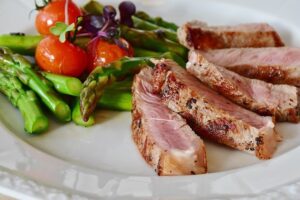Introduction
Protein-based active transport is a vital process that enables cells to move molecules across their membranes against a concentration gradient. This mechanism requires the use of proteins as carriers or pumps to transport specific substances, such as ions or larger molecules, across the cell membrane. In this article, we will explore the properties of protein-based active transport and understand how it differs from other forms of transport.
Protein Specificity
Protein specificity: One of the key properties of protein-based active transport is its specificity. Each protein carrier or pump is designed to recognize and transport a specific molecule or group of molecules. This selectivity allows cells to control the movement of substances in and out of the cell, ensuring the maintenance of proper cellular function.
Energy Requirement
Energy requirement: Unlike passive transport mechanisms, such as diffusion or facilitated diffusion, protein-based active transport requires energy expenditure. This energy is typically derived from ATP (adenosine triphosphate), the primary energy currency of cells. The energy is used to change the conformation of the protein carrier or pump, allowing it to transport molecules against their concentration gradient.
Concentration Gradient
Against concentration gradient: Protein-based active transport is unique in its ability to move molecules against their concentration gradient. This means that the transport process occurs from an area of lower concentration to an area of higher concentration. By actively pumping molecules against their natural flow, cells can accumulate substances within the cell or expel them to maintain proper cellular balance.
Saturation and Rate
Saturation and rate: Protein-based active transport exhibits saturation kinetics, meaning that there is a maximum rate at which molecules can be transported. As the concentration of the transported molecule increases, the rate of transport reaches a maximum, known as the transport maximum (Tm). Beyond this point, increasing the concentration of the molecule will not further increase the rate of transport, as all available protein carriers or pumps are already engaged.
Regulation and Control
Regulation and control: Protein-based active transport is tightly regulated to ensure the proper functioning of cells. The activity of protein carriers or pumps can be modulated by various factors, such as hormones, cellular signaling pathways, or changes in the cell’s environment. This regulation allows cells to adapt their transport processes to changing conditions and maintain homeostasis.
Examples of Protein-Based Active Transport
Examples of protein-based active transport: There are several well-known examples of protein-based active transport in biological systems. One such example is the sodium-potassium pump, which actively transports sodium ions out of the cell and potassium ions into the cell, contributing to the establishment of the cell’s resting membrane potential. Another example is the calcium pump, responsible for removing calcium ions from the cytoplasm, maintaining low intracellular calcium levels.
Conclusion
In conclusion, protein-based active transport is a crucial mechanism that allows cells to move molecules against their concentration gradient. Its properties include protein specificity, energy requirement, transport against the concentration gradient, saturation kinetics, and regulation and control. Understanding the intricacies of protein-based active transport helps us comprehend the fundamental processes that occur within cells and their role in maintaining cellular homeostasis.
References
1. Alberts, B., Johnson, A., Lewis, J., Raff, M., Roberts, K., & Walter, P. (2002). Molecular Biology of the Cell. Garland Science.
2. Nelson, D. L., Cox, M. M. (2008). Lehninger Principles of Biochemistry. W.H. Freeman and Company.
3. Lodish, H., Berk, A., Zipursky, S. L., Matsudaira, P., Baltimore, D., & Darnell, J. (2000). Molecular Cell Biology. W.H. Freeman and Company.













